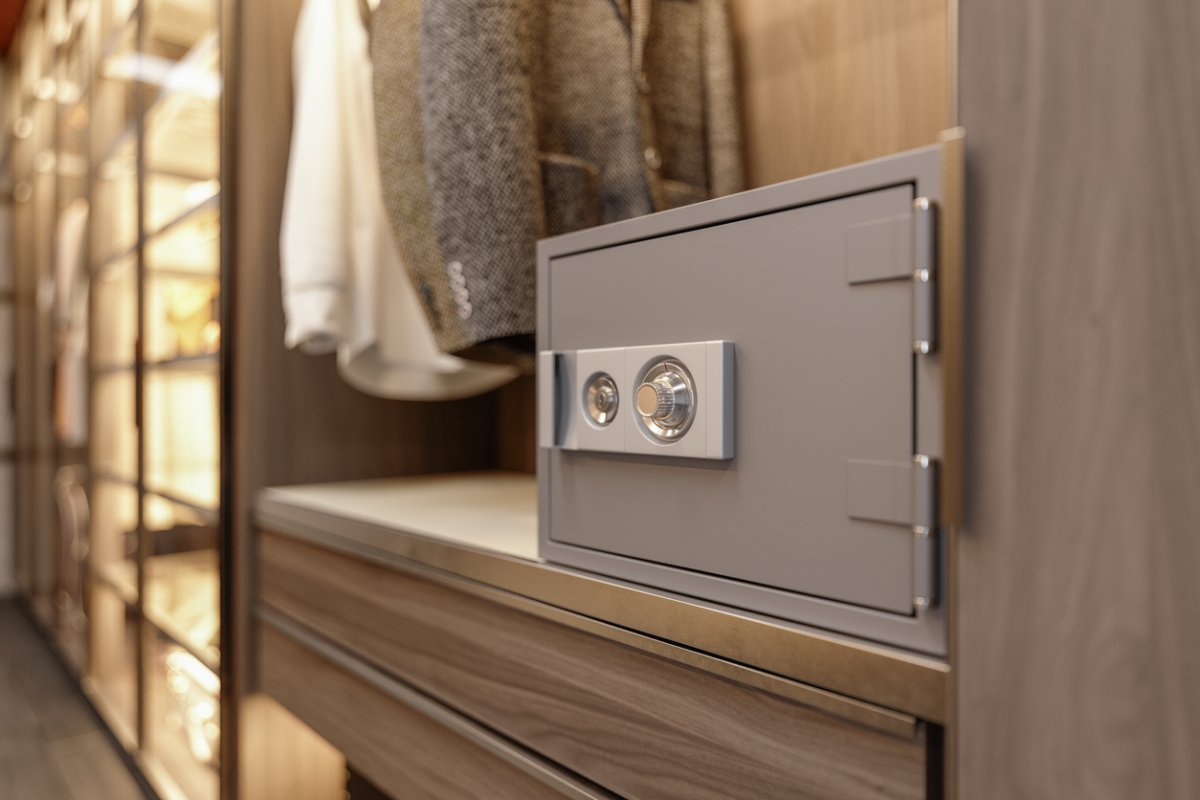We may earn revenue from the products available on this page and participate in affiliate programs. Learn More ›
Many homeowners rely on a secure home safe to keep important documents and small amounts of money or jewelry under lock and key. This precaution is more than warranted, since property crimes are the most common type of crime in the U.S. In 2021, over $737 trillion of property was stolen in more than 586,000 reported burglary incidents.
What you may not realize is that the security of your possessions depends as much on where you store them as what you store them in. On average, break-ins only last 8 to 10 minutes. Leaving a safe in an obvious location increases the odds that thieves will nab it during a burglary, so it pays to park it in an inconspicuous, inaccessible place. The more difficult it is to find your hidden valuables, the more likely burglars are to give up and move on. These suggestions for safe locations can thwart burglars and keep your safe safe.
RELATED: 36 Easy Ways to Protect Your Home from Break-Ins
1. In a Second Fridge
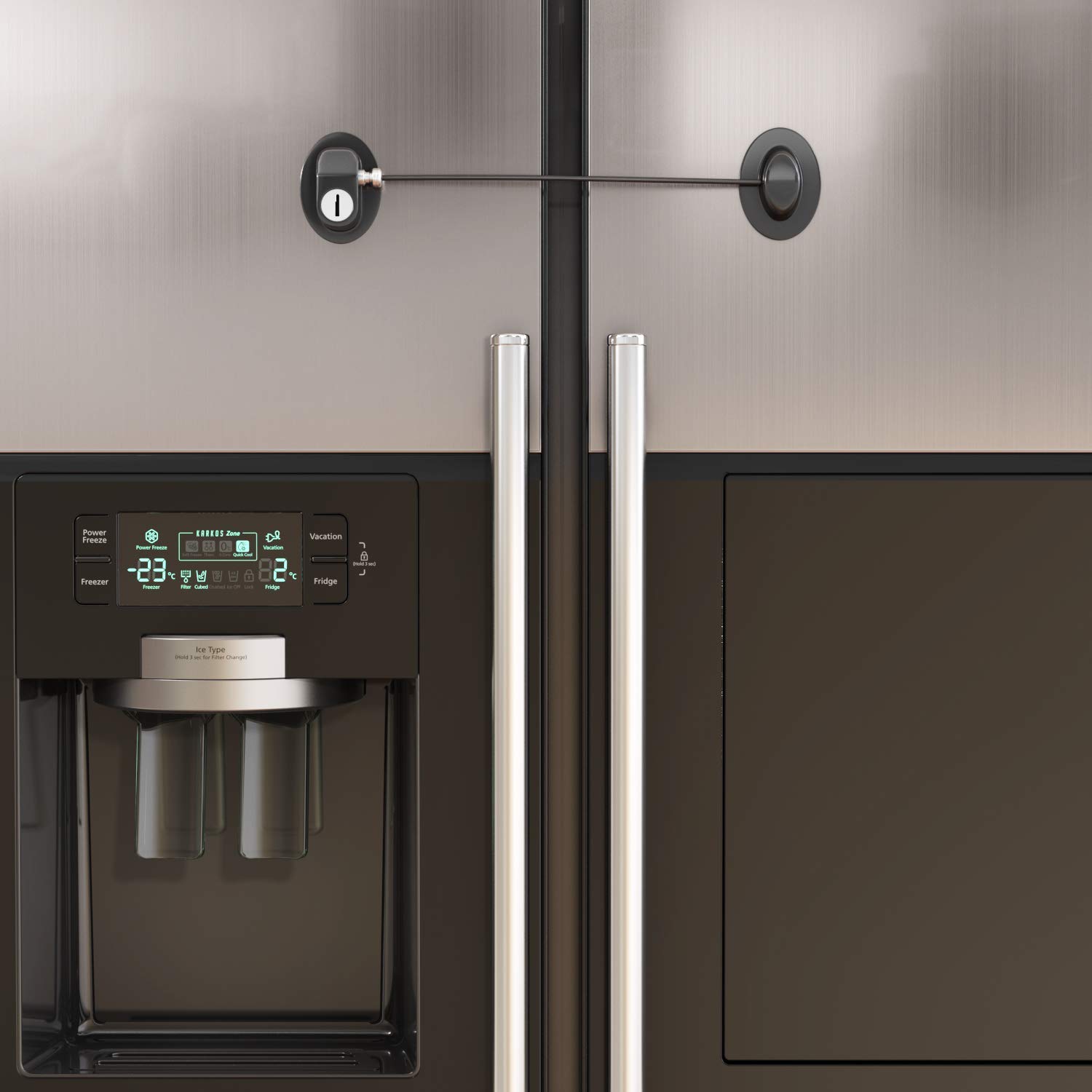
Holding on to an underused fridge? Place your safe in an opaque bag and stow it in the freezer compartment. It’s common to stash a second fridge in the garage or basement to store surplus beverages, so thieves are unlikely to poke around inside for valuables. For extra security, you can also affix a keyed lock, like the HavenHause fridge lock, to the appliance.
2. In a Vent
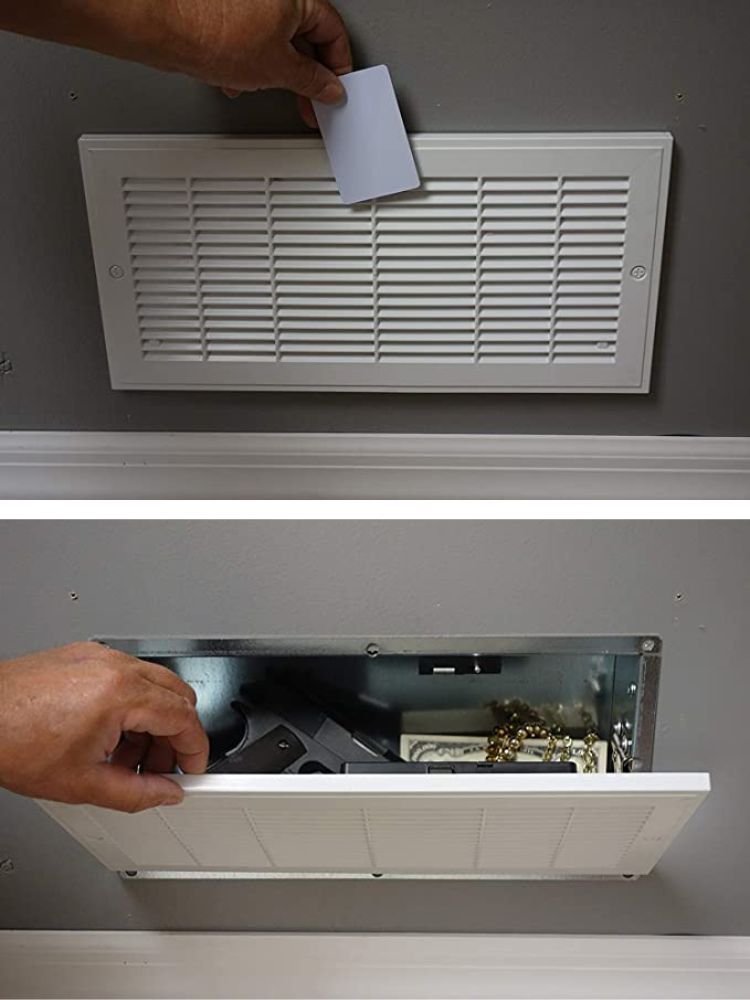
A dead ringer for a vent, this sneaky wall safe won’t stand out from any of the other air supply and return grilles already in your home to help regulate air flow. The Home Self Defense Products Quick Vent features an RFID locking mechanism and can be mounted to just about any wall in mere minutes. Just wave the included RFID card, key fob, or token across the top of the safe to open it instantly.
3. Underfoot
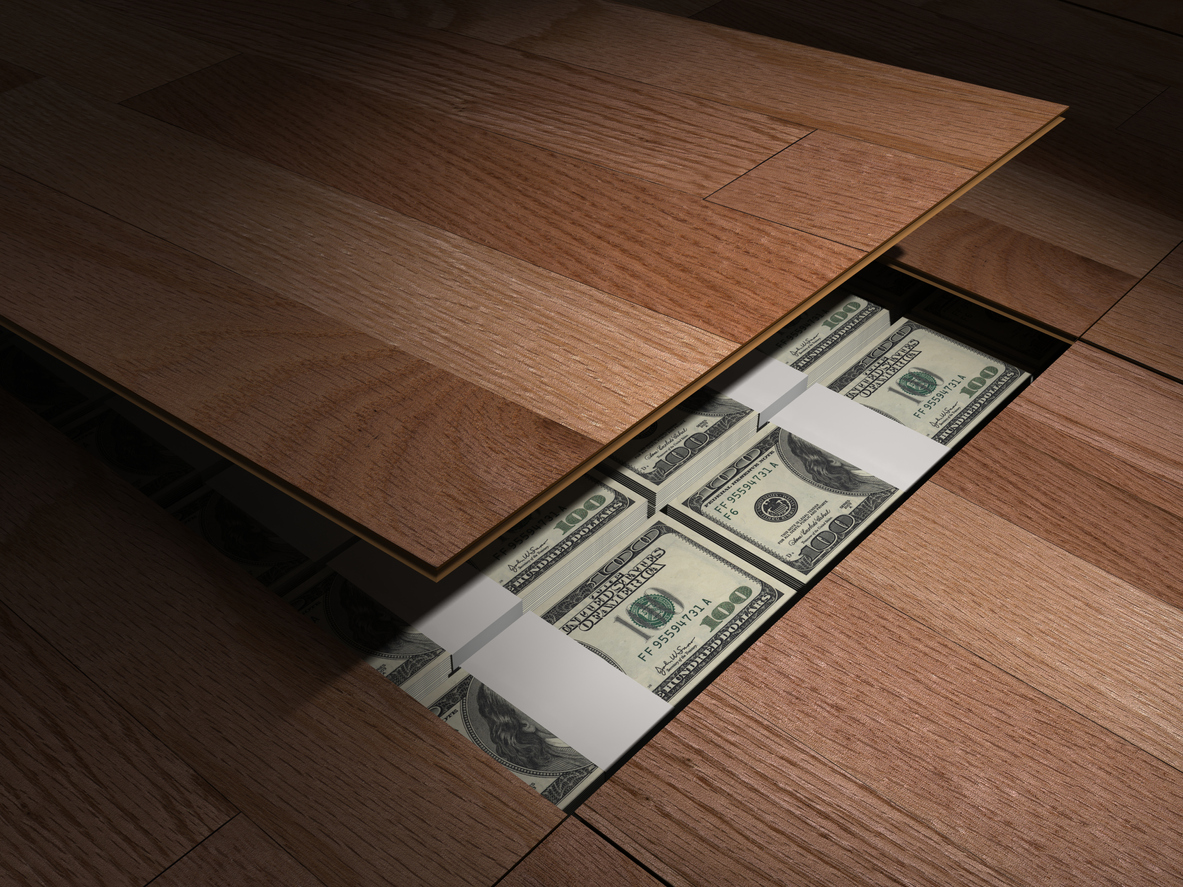
With basic woodworking skills, you can create a secret, built-in floor compartment for your prized possessions. Cut out a small area of your hardwood flooring (make sure there’s no plumbing or wiring in the area first), preserving the cut wood for use as the lid of the box. If you are feeling ambitious, build a wooden box to house your floor safe and secure the box to the floor joists with screws. Finally, attach a cabinet pull to the lid and drop the lid into the floor opening. Tuck the safe inside this new secret hiding place and cover the lid with a rug or piece of furniture.
4. Under the Mattress

For robbers rifling through your bedroom, the most obvious locations for loot are under the bed frame and inside any pull-out drawers beneath it. That makes under the mattress with no obvious storage a sneakier spot for a safe. Consider a bed frame with under-mattress storage, like this faux leather upholstered platform bed from DHP Cambridge. Beds like these usually include a lift mechanism that allows you to easily raise the mattress—and access your valuables.
RELATED: The Best Home Safes for Securing Valuables, Tested
5. In a Wall

While a safe mounted on the wall can be pried free with a little muscle and the right tools, one mounted inside the wall isn’t going anywhere. The HMC Holdings steel wall vault mounts flush with interior walls between two studs spaced 16 inches apart. Its slim design means you can install it in a cramped closet, or in a high-traffic spot concealed by a mirror or framed print.
6. In a Book

This dupe of The New English Dictionary is ideal for cash, passports, and other personal effects. Available in two sizes and three colors, the Jssmst book safe comes with a three-digit combination lock, so there’s no risk of losing keys. And at only 2 inches wide, it’s slim enough to park on a bookshelf or nightstand or inside a desk drawer alongside the rest of your reads.
7. Inside Stair Steps
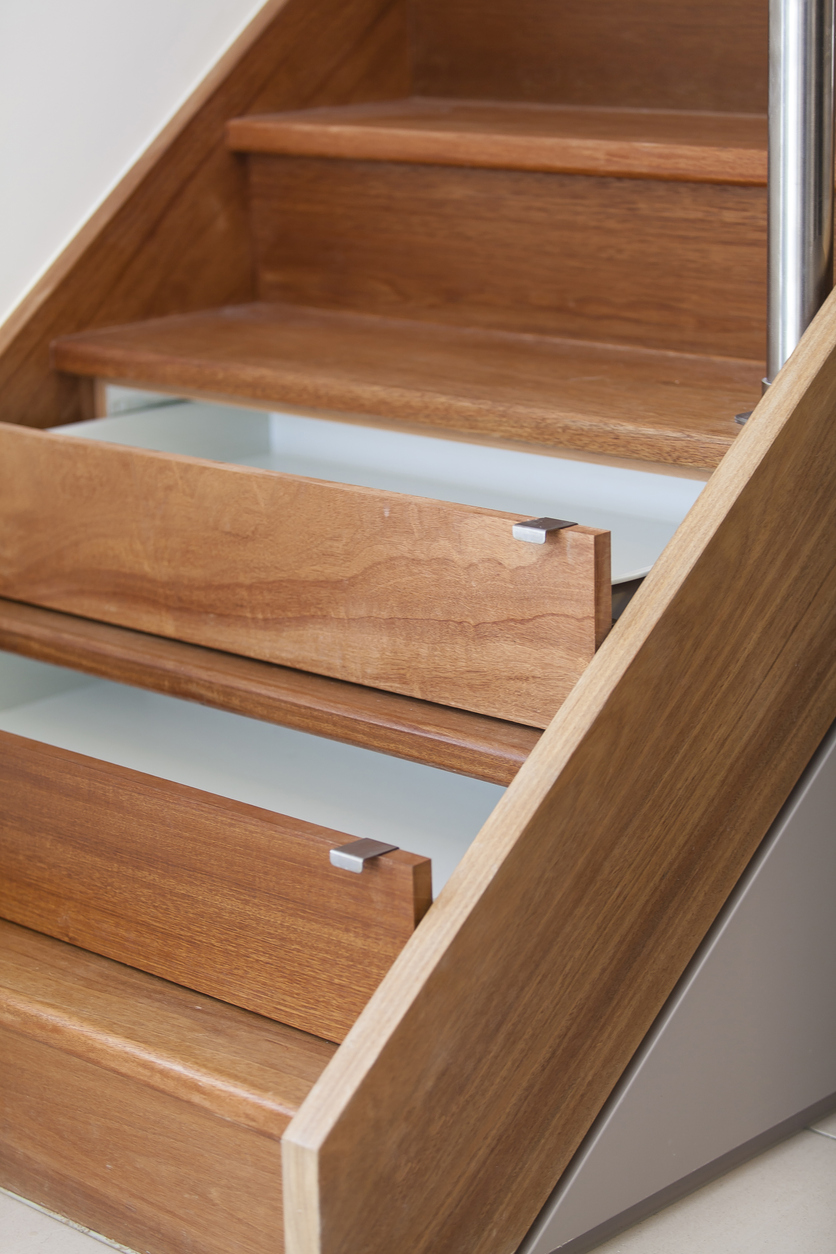
This safe storage solution turns a step in your staircase into a compartment big enough to fit a small strongbox. After removing an existing stair tread, slip your safe inside the step, and re-attach the tread with a piano hinge so you can lift or lower the tread. Or, if you’re feeling especially handy, you might consider removing the riser and turning it into the front of a drawer. Either way, as burglars prowl the premises, they’ll never think to check underfoot!
RELATED: 10 Things a Burglar Doesn’t Want You to Know
8. Under the Stairs

Creating a stealth opening in the walled-in space under the stairs is a more involved DIY project than our other step-related inspiration, but the larger space can secure a bigger safe. Install a door or drawers in the opening, and discreetly stow your safe behind or inside them. In the event of a home break-in, this crawl space beneath the stairs can double as a hiding space until the threat has passed.
9. Inside a Shelf

While guests are glued to what’s on this floating shelf, you’ll be the only one who knows what’s inside. QuickSafes’ QuickShelf safe is a 24-inch, birch-veneer floating shelf with a built-in compartment in the base that unlocks through hackproof radio-frequency identification (RFID) keys. Simply attach the safe to the wall with the included mounting hardware, wave the RFID card over the shelf to open the base, pop in your most precious items, and close the safe. The spring-loaded hinges let you adjust the angle of the safe’s opening from 30 to 90 degrees.
10. Behind the Mantel
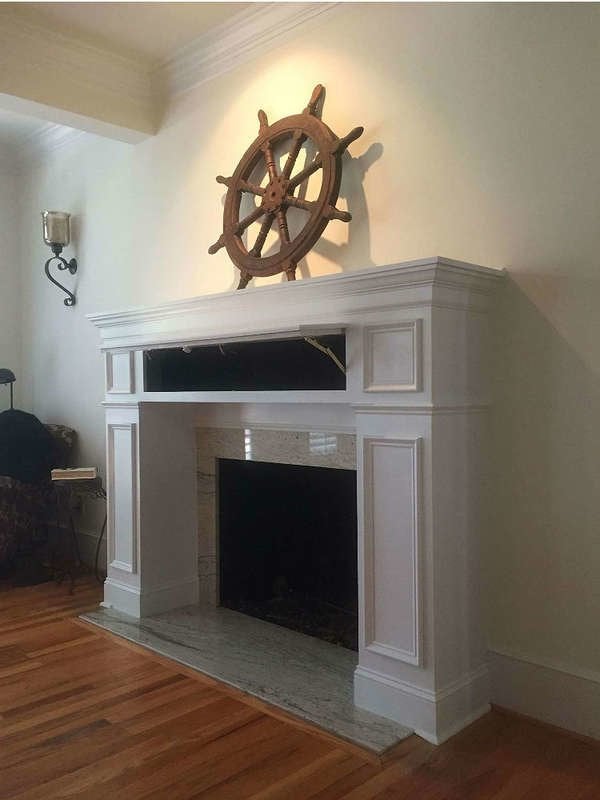
Thwart thieves by hiding your safe behind cleverly designed mantel trim. The center panel of this mantel designed by Covert Concepts doubles as a door to a secret compartment into which you can slide a small safe. The hinged door opening makes for quick and easy access.
11. Behind a Sliding Door
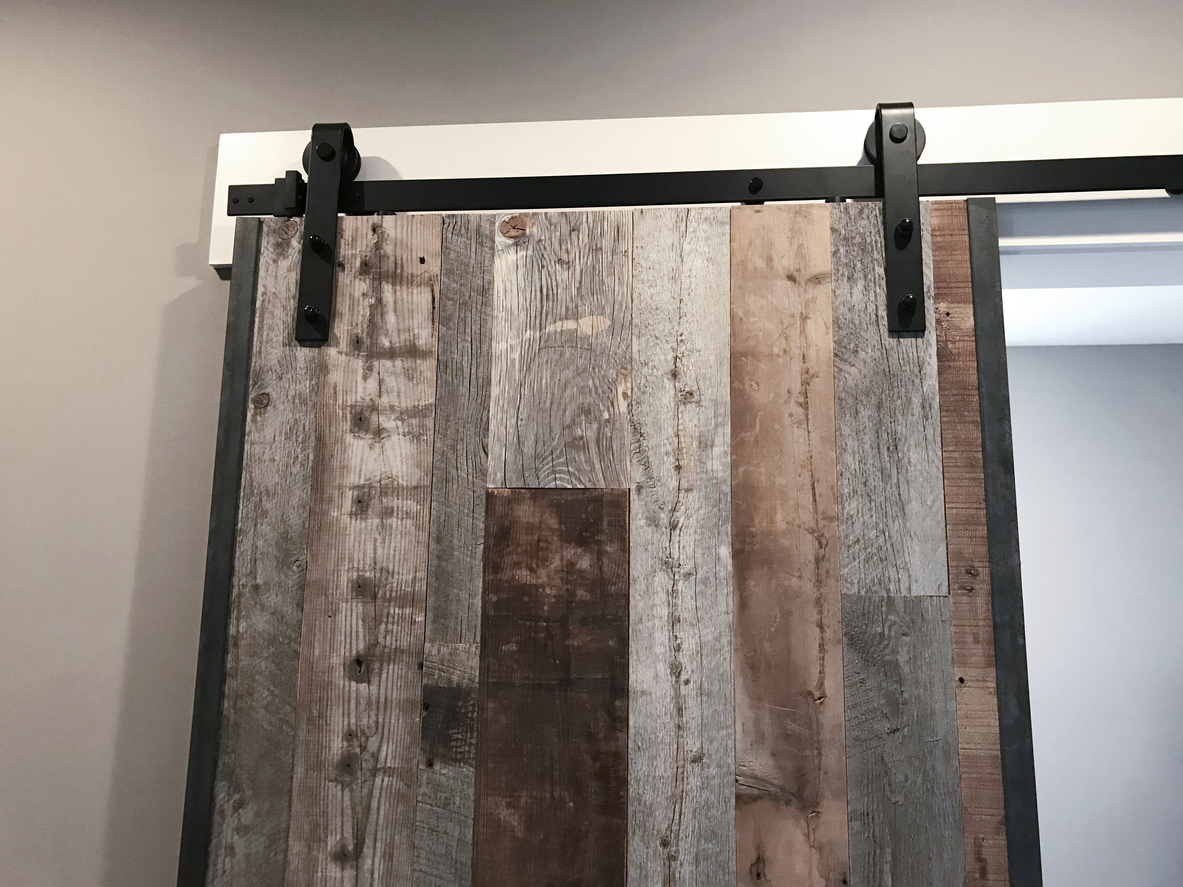
If lack of closet and wall space necessitates leaving a safe in plain view, park it in an unused nook and provide some cover. Installing a sliding door in front of the area that houses your safe is an easy way to bolster security and style. A barn door like this one moves horizontally along a track above the door, keeping a safe stored behind it within arm’s reach but out of sight.
RELATED: 6 Types of Safes All Security-Minded Homeowners Should Know
12. Inside the Kitchen Pantry
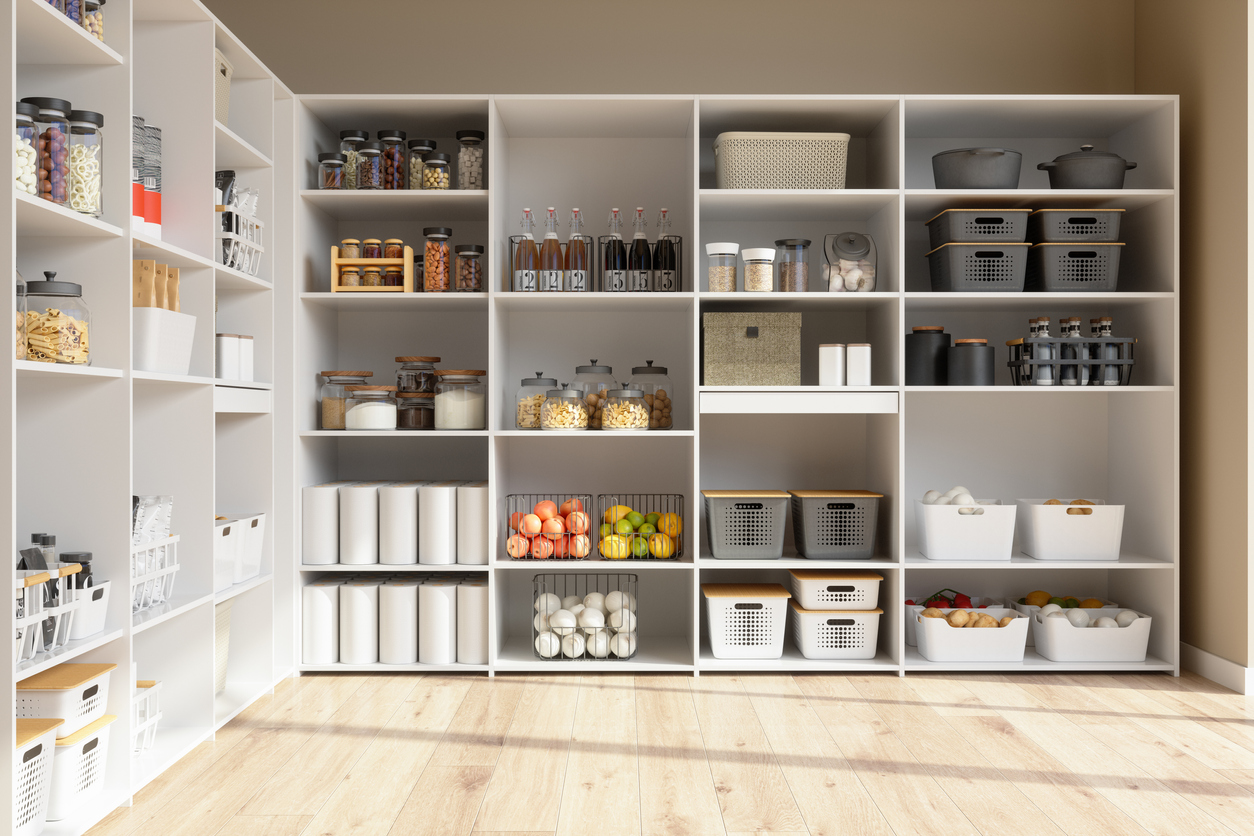
One of the last places thieves are likely to check for your safe? Near your canned goods. Keith Melanson, an interior designer in Ottawa, Canada, has some clients who keep their safes inside their kitchen pantries. “This place is usually free of moisture or humidity, which means the contents of your safe as well as the safe itself will remain unaltered,” Melanson says.
13. Under a Laundry Hamper
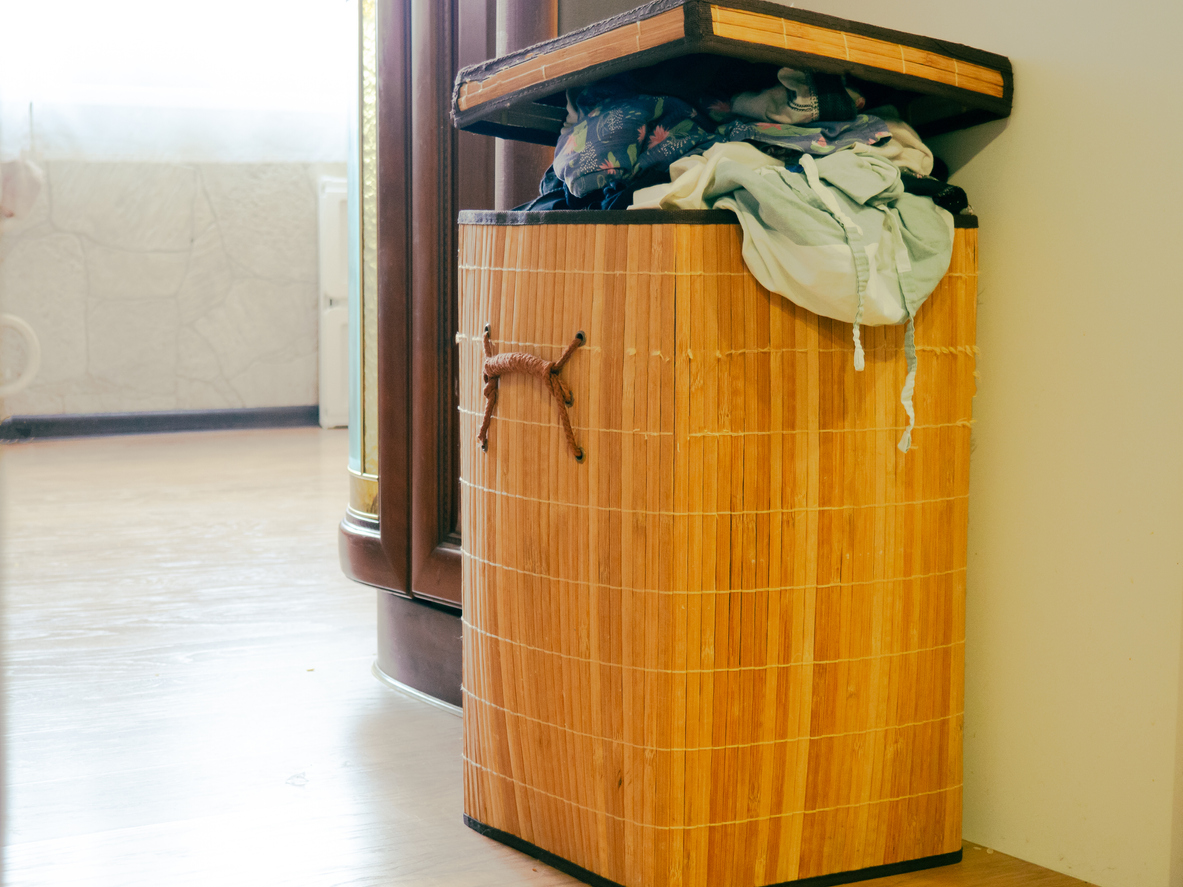
Outsmart thieves by using common household items, such as a laundry hamper, to hide your safe. One anonymous homeowner says they have their safe bolted to the floor and further hidden by a laundry hamper and a pile of dirty clothes. Most burglars won’t think to look under a laundry hamper and pile of stinky clothes to find valuables, which keeps this home safe secure.
14. Inside Furniture

Hiding a safe in plain sight is another way to keep your valuables out of harm’s way. Nate Claire, founder of Buying Jax Homes, had a client who hid their built-in safe inside a large leather couch. The couch was custom made with a safe built into its base, hidden beneath a zippered liner and the couch’s seat cushions. No one sitting on the couch guesses just how prime that real estate is!
15. Under Hanging Clothes

Make the most of your closet space and inconspicuously conceal your valuables with Stash-It’s hanger diversion safe, a slim safe that attaches to your clothes hanger. Burglars are unlikely to paw through your clothes, and this will go unnoticed under a blazer or bulky jacket. The nice thing about this safe is that it’s portable and easily stowed in a suitcase. Bring it on your travels to secure your passport, cash, or other important items.
RELATED: 10 Free and Low-Cost Ways to Improve Your Home Security
16. Under a Plant

Green thumbs are bound to have potted plants around the home, which is why Suck UK’s Hideaway Plant Pots make a wise disguise for small valuables. Though it’s not a safe per se, we can’t resist this succulent-sized pot that has just enough hidden space to stash keys, money, or jewelry.
